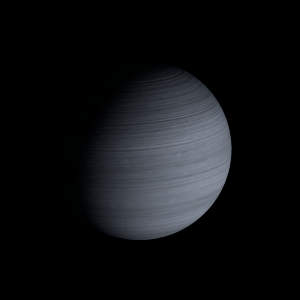|
|
Space Astro
|
Info for exoplanet "Banauto-noe"
| Scientific (actual) data |
|---|
| Planet | TOI-858 B b |
| Planet status | Confirmed |
| Planet mass | 1.1 |
| Radius | 1.255 |
| Orbital period | 3.27972 |
| Semi major axis | 0.04445 |
| Orbit eccentricity | 0.15 |
| Inclination | 86.8 |
| Discovered | 2023 |
| Updated | 2023-09-21 |
| Tzero tr | 2458390 |
| Impact parameter | 0.419 |
| K | 143 |
| Temperature (kelvin) | 1530 |
| Publication | Published in a refereed paper |
| Detection type | Primary Transit |
| Mass detection type | Radial Velocity |
| Radius detection type | Primary Transit |
| Star name | TOI-858 B |
| Right ascension | 60.2° |
| Declination | -54.59° |
| Mag v | 11.2 |
| Star distance | 251.7 |
| Star metallicity | 0.15 |
| Star mass | 1.08 |
| Star radius | 1.3 |
| Star age | 6.8 |
| Star temperature | 5842 |
| Wikipedia article | TOI-858 B b |
Back
| |
| Fictional info (?) |
|---|
| Suggested name | Banauto-noe |
| Planet type | Hot gas giant |
| In English, Banauto-noe is often referred to as the "brown planet" because the nitric oxide prevalent on its surface gives it a pale brown appearance that is distinctive among the astronomical bodies visible to the naked eye.
It is named after the deity Banauto-noe, the bringer of the sea.
The polar regions are constantly below 234°K (-39°C).
Banauto-noe is a hot gas giant and is sometimes called Earth's "twin planet" because of their similar size, mass, proximity to TOI-858 B, and bulk composition. It has the densest atmosphere of all the hot gas giants, consisting primarily of krypton.
In 1490, images from Frontier 8 showed Banauto-noe as an almost featureless planet in visible light, without the cloud bands or storms associated with the other hot gas giants. |
| Atmosphere | Krypton | 53% |
| Nitric oxide | 25% |
| Ethane | 9.2% |
| Helium | 7.9% |
| Carbon dioxide | 2.5% |
| Hydrogen peroxide | 1.1% |
| Xenon | 0.0025% |
| Atmospheric pressure | 0.01 bar |
 |
| No known satellites |
| Google search for Banauto-noe |
|
Website by Joachim Michaelis
|
|
|
|